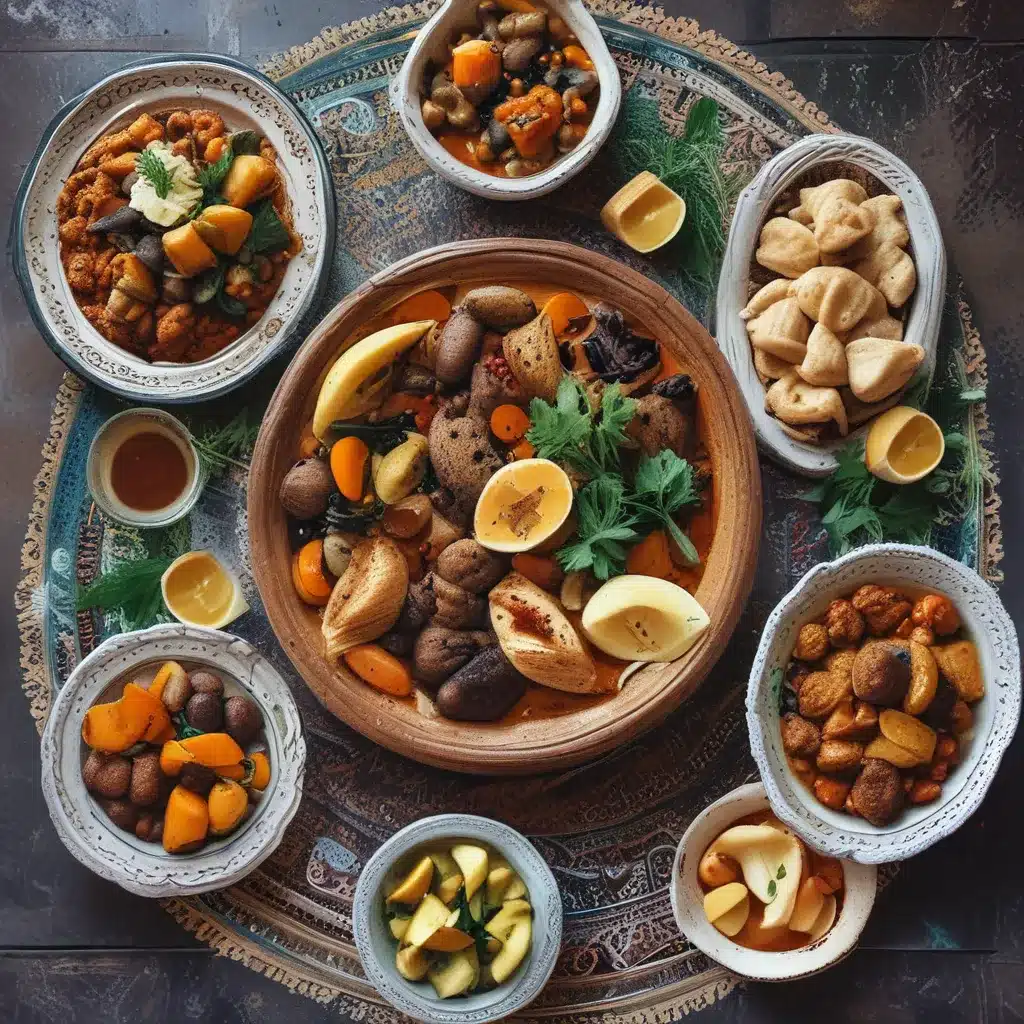
A Taste of the Kingdom
As I step into El Bahia, a Moroccan restaurant nestled in the heart of New York City, the sights, sounds, and aromas instantly transport me to another world. The vibrant tiles, ornate lanterns, and the melody of traditional Moroccan music create an atmosphere that is both exotic and inviting. I know I’m in for a culinary journey that will engage all my senses.
Moroccan cuisine is a captivating blend of flavors, textures, and traditions that have been honed over centuries. It’s a culinary tapestry woven with influences from the Mediterranean, the Middle East, and even sub-Saharan Africa. And at El Bahia, they’ve mastered the art of bringing these diverse elements together in a symphony of taste.
As the renowned food writer Claudia Roden notes, Moroccan cuisine is filled with “fantastic tastes and subtleties” that can transport you to the vibrant souks and ancient medinas of this captivating North African kingdom.
The Art of the Tagine
As I peruse the menu, my eyes are immediately drawn to the array of tagines on offer. These slow-cooked stews, named after the distinctive clay pot in which they are prepared, are the cornerstone of Moroccan cuisine.
I decide to start with the Chicken Tagine, a dish that immediately piques my curiosity. The server arrives with a beautiful presentation – the tagine pot is placed on the table, and as the lid is lifted, a cloud of aromatic steam fills the air, carrying the scents of saffron, cinnamon, and preserved lemon.
I eagerly scoop up a forkful, my anticipation building. The first bite is a revelation – the chicken is meltingly tender, infused with the complex flavors of the spices and herbs. The sweetness of the caramelized onions and the burst of acidity from the preserved lemon create a harmonious balance that dances on my palate.
As food blogger Dreena Burton notes, the subtleties of Moroccan cuisine can be easily overshadowed, but at El Bahia, the flavors are allowed to shine, each element complementing the others in a symphony of taste.
Exploring the Spice Medley
As I delve deeper into the menu, I’m captivated by the array of spices that form the backbone of Moroccan cooking. From the earthy cumin to the warm cinnamon, the fragrant ginger to the smoky paprika, these spices create a complex and layered flavor profile that is both comforting and intriguing.
I can’t resist ordering the Lamb Tagine with Prunes and Almonds, a dish that showcases the interplay of sweet and savory, with the richness of the lamb balanced by the sweetness of the prunes and the crunch of the toasted almonds.
As the author of the article “Growing Up Vegetarian in Morocco” notes, the spice blends used in Moroccan cuisine, such as ras el hanout, are essential to creating the depth of flavor that distinguishes this culinary tradition.
At El Bahia, the chefs have clearly mastered the art of blending these spices, coaxing out their nuances and allowing them to work in harmony. Each bite is a revelation, a journey through the diverse flavors of the Moroccan spice market.
A Feast for the Senses
As I continue my meal, I’m struck by the visual artistry of the dishes. The vibrant colors of the vegetables, the intricate patterns of the couscous, and the presentation of the tagines all contribute to an immersive dining experience.
But it’s not just the visual appeal that captivates me – the aromas wafting from the table are intoxicating, a symphony of spices and herbs that tantalize the senses. The sound of the sizzling meats and the gentle bubbling of the stews create a sensory backdrop that heightens the anticipation of each bite.
And then there’s the texture – the tender, fall-off-the-bone meats, the fluffy couscous, the crisp-edged flatbreads. Each element adds a new dimension to the dining experience, making it a true feast for the senses.
A Celebration of Tradition
As I savor the final bites of my meal, I’m struck by the rich history and cultural significance that Moroccan cuisine represents. As Claudia Roden observes, Moroccan cuisine is deeply rooted in the country’s diverse regions and traditions, with each dish reflecting the unique flavors and techniques of a particular area.
At El Bahia, the chefs have clearly embraced this heritage, using traditional methods and ingredients to create dishes that pay homage to the rich culinary legacy of Morocco. From the fragrant spice blends to the slow-cooked tagines, every element of the meal speaks to the centuries-old traditions that have shaped this captivating cuisine.
As I leave El Bahia, my senses still alive with the flavors of my Moroccan feast, I can’t help but feel a deeper appreciation for the complexity and nuance of this remarkable culinary tradition. It’s a testament to the power of food to transport us, to connect us to distant lands and ancient cultures.
And for me, this meal at El Bahia has been a journey of discovery, a chance to explore the subtleties of a Moroccan meal and to uncover the rich tapestry of flavors that make this cuisine so compelling. I can’t wait to return, to delve deeper into the culinary wonders of this enchanting North African kingdom.


